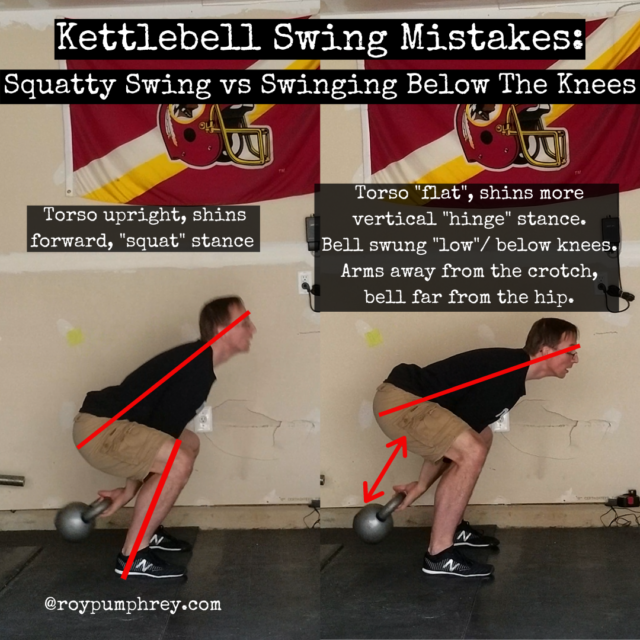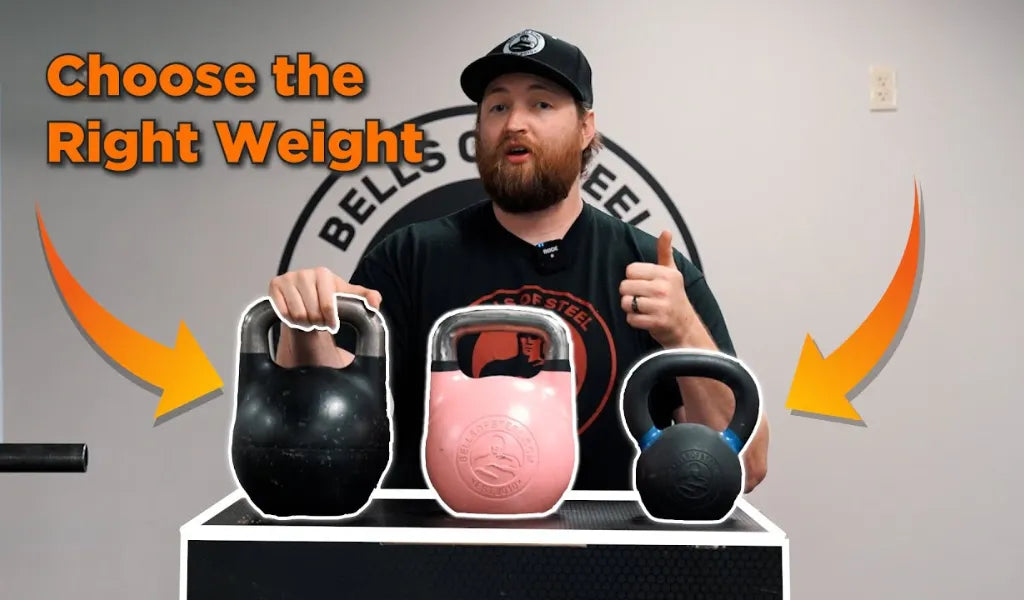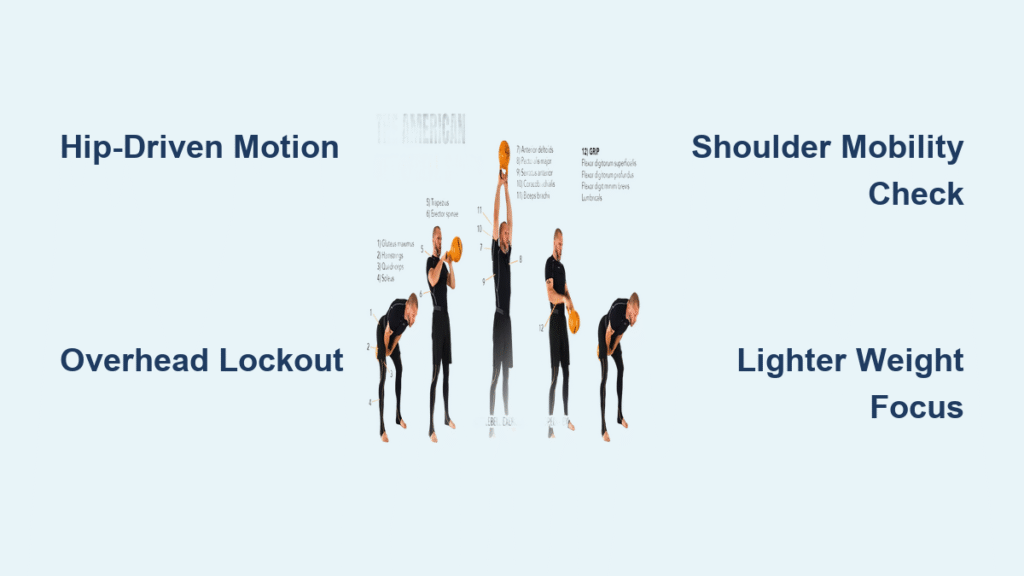That sharp twinge in your shoulder during the 15th American kettlebell swing? It’s your body screaming that you’re doing it wrong. Unlike the Russian swing that stops at chest height, the American variation demands you blast the bell overhead with arms locked—a movement that turns many athletes into walking shoulder injuries. CrossFit boxes treat it as gospel, but 90% of people butcher the mechanics, transforming what should be a hip-driven powerhouse into a spine-wrecking shoulder disaster. If you’ve ever finished a WOD with throbbing shoulders or lower back pain, this guide reveals exactly how to execute flawless American kettlebell swings while dodging the landmines that derail most trainees.
The brutal truth? The American kettlebell swing isn’t for beginners. It requires rock-solid hip hinge mechanics, 180° of pain-free overhead mobility, and core stability that keeps your ribs glued to your pelvis. Skip these prerequisites, and you’re not building fitness—you’re buying future physical therapy bills. But nail the technique, and you’ll unlock savage conditioning that melts fat while building bulletproof shoulders. Here’s how to do it right.
Why Russian Swings Beat American Swings for Power Development
Force-plate data exposes a dirty secret: the American kettlebell swing delivers zero extra hip power compared to Russian swings. When researchers matched loads and speeds, peak power output stayed identical. The overhead finish only drags out time under tension by 35-40%—making it a conditioning tool, not a power builder.
The Load Trade-Off You Can’t Ignore
- American swings demand 50-60% lighter weights than your Russian swing max
- Example: If you swing 32kg Russian style, cap American swings at 16-20kg
- Critical insight: That overhead position amplifies perceived load by 40-50% due to shoulder instability
When to Choose Russian Over American
Stick with Russian swings if:
– You’re building pure posterior-chain power (glutes/hamstrings)
– Shoulder mobility falls short of 180° overhead reach
– Your WOD requires heavy loads (24kg+)
– Pro tip: Heavy Russian swings (32kg+) build more strength than American swings at half the weight
How to Execute Perfect American Swings Without Shoulder Damage
Hip-First Setup That Prevents Back Strain
Stand with feet shoulder-width apart, kettlebell 12 inches ahead. Hinge at your hips—not knees—until your torso hits 45 degrees. Shins stay vertical, weight balanced over mid-foot. At the bottom position, your hamstrings should scream with tension; if quads fire first, you’re squatting, not hinging. This depth loads your glutes like a coiled spring.
The Hip Snap That Launches the Bell
Explode upward by driving hips forward like you’re crushing a walnut between your glutes. Your arms are ropes, not levers—the bell floats upward purely from hip thrust. Watch for this visual cue: at peak hip extension, the bell should momentarily float away from your body. If it travels in a straight line (not an arc), you’re muscling it with shoulders.
Overhead Lockout Without Lumbar Disaster
As the bell clears eye level, guide it overhead while ribs stay pulled down toward your pelvis. At full lockout:
– Elbows locked, bell upside-down (underside facing ceiling)
– Neck neutral—never crane to watch the bell
– Core braced like you’re about to take a punch
Fix flared ribs: Exhale sharply at the top while imagining “zipping up a tight pair of jeans” to engage your core.
Gravity-Powered Descent Technique
Let the bell fall freely—never pull it down. As it descends, guide it back through your legs by hinging at the hips. Your arms should stay relaxed; tension only builds during the hip drive phase. If you feel shoulder strain here, reset with lighter weight.
The 3 American Swing Mistakes That Wreck Shoulders

Lumbar Hyperextension at Lockout (Most Dangerous)
Why it happens: Ribs flare upward while pelvis tucks under, dumping load onto lumbar discs.
How to fix: Practice wall slides—stand 6 inches from a wall, reach overhead without letting lower back touch the wall. Do 3 sets of 10 daily.
Arm-Dominant Pulling Instead of Hip Driving
Red flag: Bell travels vertically instead of in a smooth arc.
Drill solution: Place a foam roller vertically between your knees. Squeeze it on every rep while focusing on hip snap. If you drop the roller, you’re cheating the hinge.
Shallow Hip Hinge Depth
Symptom: Feeling the movement in quads or lower back instead of glutes.
Mobility fix: Do 5 reps of “kettlebell deadlift to swing” transitions: lift bell to hip height, then drop into hinge position before each swing.
American Kettlebell Swing Loading Chart (No Guesswork)

| Training Level | Men’s Weight | Women’s Weight | Critical Cue |
|---|---|---|---|
| Beginner | 12-16kg | 8-12kg | Must pass overhead screen test first |
| Intermediate | 20-24kg | 16-20kg | Never exceed 24kg regardless of strength |
| Advanced | 28kg max | 24kg max | Stop immediately if shoulder clicks |
Warning: If your Russian swing is 24kg, start American swings at 12kg—not 16kg. That extra 4kg creates 50% more shoulder torque in the overhead position.
Must-Pass Mobility Tests Before Attempting American Swings
The 3-Point Overhead Screen
- Shoulder flexion: Lie on back, arms overhead. Palms must touch floor without rib flare.
- T-spine rotation: Kneel, place one hand behind head. Rotate elbow toward ceiling—elbow should clear knee.
- Hip hinge: Touch toes without rounding lower back. Hamstrings must feel tight.
Fail any test? Stop. Do 5 minutes daily of:
– Wall slides (10 reps)
– Banded shoulder dislocates (8 reps/side)
– Cat-cow stretches (12 reps)
Smart Programming to Avoid Overuse Injuries
Weekly Volume Limits That Protect Shoulders
- Beginners: 60 total reps max across 2 sessions (e.g., 3×10 twice weekly)
- Intermediate: 100 reps across 3 sessions
- Advanced: 150 reps max—only if mobility tests pass quarterly
Best Conditioning Protocols
- EMOM 8×8: 8 reps every minute for 8 minutes (ideal for beginners)
- Tabata: 20 seconds on, 10 seconds off x 8 rounds (use 8kg/12kg max)
- Descending ladder: 12-9-6 reps with 20 seconds rest (prevents form breakdown)
Critical rule: When form degrades, drop weight 25%—never grind out bad reps. Shoulder tendons don’t recover like muscles.
When to Ditch American Swings Entirely
Stop immediately if you experience:
– Sharp shoulder pain during lockout (rotator cuff warning)
– Lower back pinch during hip extension
– Wrist ache from bottom-up bell position
– Neck strain from looking upward
Better alternatives:
– Kettlebell snatch: Same overhead finish with safer shoulder rotation
– Heavy Russian swings: Build more power with 32kg+ loads
– Double-kettlebell swings: 60% combined Russian weight for metabolic burn
Final reality check: The American kettlebell swing isn’t inherently evil—but it’s not a beginner movement. Master Russian swings first, pass the overhead mobility tests, and never chase weight at the expense of form. When programmed correctly (light weight, strict reps, capped volume), it becomes a metabolic monster that builds real-world shoulder resilience. But skip the prerequisites, and you’re not earning fitness—you’re earning an appointment with your orthopedist. Your shoulders can handle the overhead finish if you earn it step by step. Start light, prioritize perfect form, and let your mobility dictate your progress—not your ego.




